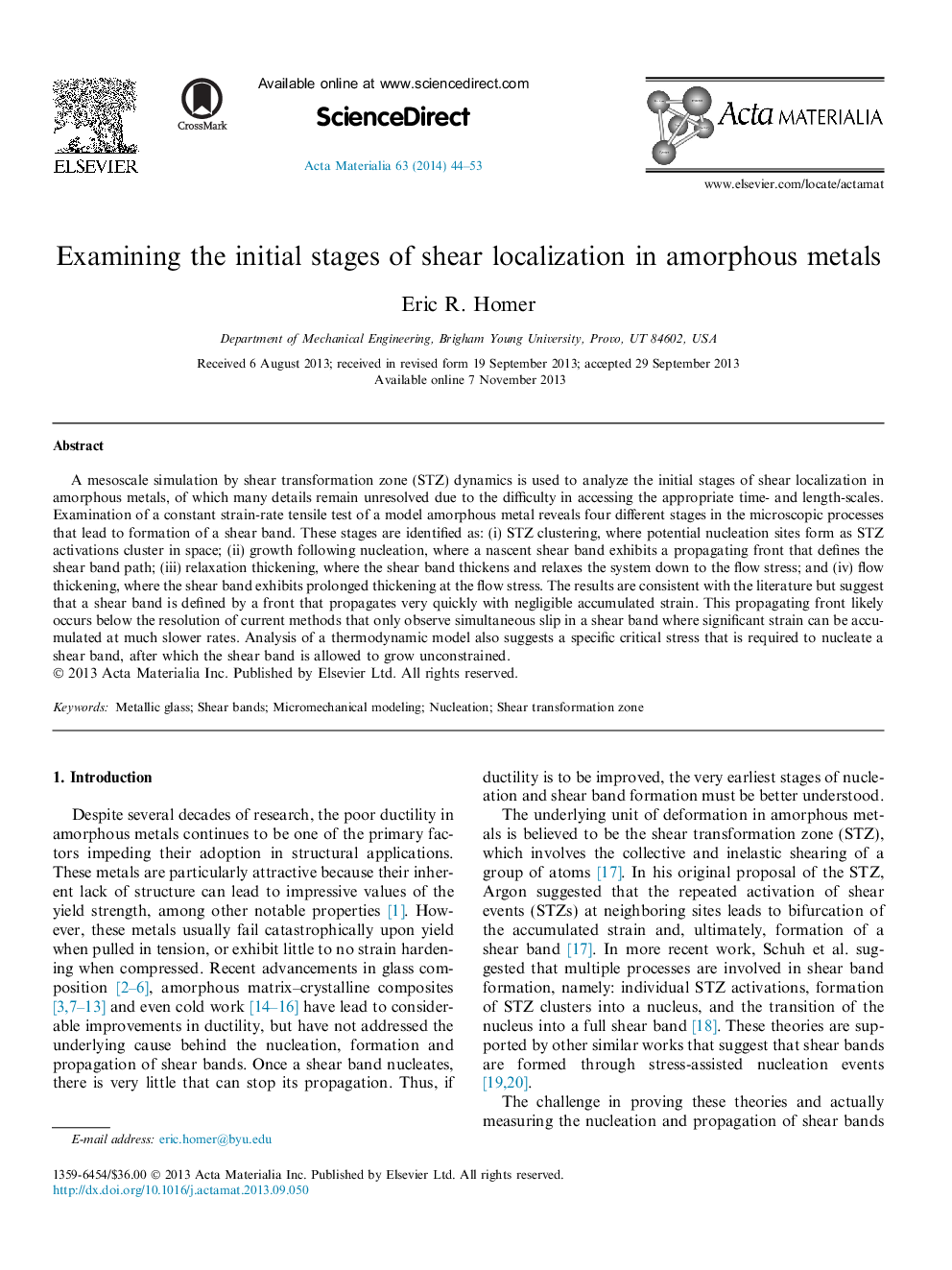| Article ID | Journal | Published Year | Pages | File Type |
|---|---|---|---|---|
| 1445891 | Acta Materialia | 2014 | 10 Pages |
A mesoscale simulation by shear transformation zone (STZ) dynamics is used to analyze the initial stages of shear localization in amorphous metals, of which many details remain unresolved due to the difficulty in accessing the appropriate time- and length-scales. Examination of a constant strain-rate tensile test of a model amorphous metal reveals four different stages in the microscopic processes that lead to formation of a shear band. These stages are identified as: (i) STZ clustering, where potential nucleation sites form as STZ activations cluster in space; (ii) growth following nucleation, where a nascent shear band exhibits a propagating front that defines the shear band path; (iii) relaxation thickening, where the shear band thickens and relaxes the system down to the flow stress; and (iv) flow thickening, where the shear band exhibits prolonged thickening at the flow stress. The results are consistent with the literature but suggest that a shear band is defined by a front that propagates very quickly with negligible accumulated strain. This propagating front likely occurs below the resolution of current methods that only observe simultaneous slip in a shear band where significant strain can be accumulated at much slower rates. Analysis of a thermodynamic model also suggests a specific critical stress that is required to nucleate a shear band, after which the shear band is allowed to grow unconstrained.
